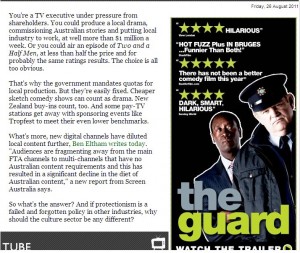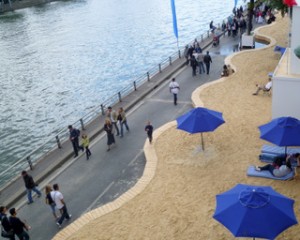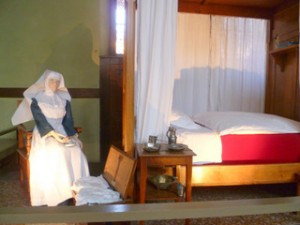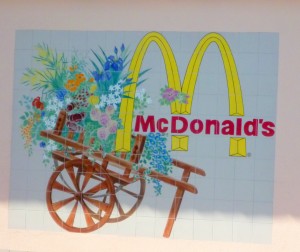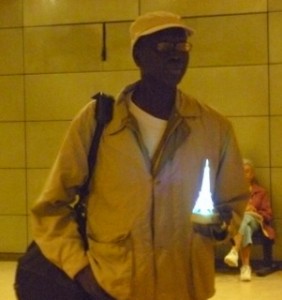Last week Martha Nussbaum – an Ernst Freund Distinguished Service Professor of Law and Ethics at the University of Chicago – delivered the 2011 Hal Wootten Lecture at the University of New South Wales Faculty of Law.
Nussbaum spoke about “a world-wide crisis in education” across all levels of the education system, spawned by an increased focus by nations on technical skills that will drive direct and short-term profits, and the subsequent loss of skills acquired through the humanities and the study of the arts, history, philosophy and literature.
She noted that “Today, radical changes are occurring everywhere in what democratic societies teach the young, and these changes have not been well thought through. Eager for national profit, nations, and their systems of education, are heedlessly discarding skills that are needed to keep democracies alive. If this trend continues, nations all over the world will soon be producing generations of useful machines, rather than complete citizens who can think for themselves, criticize tradition, and understand the significance of another person’s sufferings and achievements. What are these radical changes? The humanities and the arts are being cut away, in both primary/secondary and college/university education, in virtually every nation of the world. Seen by policy-makers as useless frills, at a time when nations must cut away all useless things in order to stay competitive in the global market, they are rapidly losing their place in curricula, and also in the minds and hearts of parents and children.”
Nussbaum cited several cases where this trend is evident, and links it directly to the worldwide pursuit of economic growth in favour (almost unconsciously) over the long-term wellbeing of a strong democratic society.
“With the rush to profitability in the global market, non-technical abilities are at risk of getting lost: abilities crucial to the health of any democracy internally, and to the creation of a decent world culture and a robust type of global citizenship, capable of constructively addressing the world’s most pressing problems. These abilities are associated with the humanities and the arts: the ability to think critically; the ability to transcend local loyalties and to approach world problems as a ‘citizen of the world’; and the ability to imagine sympathetically the predicament of another person.”
This purely economic approach to the education system, Nussbaum argues, is driven by the standard model of development widely adopted by nations worldwide-that which focuses on increasing its Gross National Product per capita. This approach however fails to consider the distribution of this wealth across the society and therefore fails to capture an overall picture of quality of life. Nussbaum points to South Africa as a shining example of this ‘old model of development’, where the discrepancies between the elite wealthy minority and the distributional inequalities, health and education differences and apartheid regime, were largely ignored. Similarly Australia enjoyed a period of a high GDP in parallel with the exclusion and oppression of its aboriginal people.
“The goal of a nation, says this model of development, should be economic growth: never mind about distribution and social equality, never mind about the preconditions of stable democracy, never mind about the quality of race and gender relations, never mind about the improvement of other aspects of a human being’s quality of life such as health and education.”
This old model of development, Nussbaum points out, has been rejected by many development thinkers, despite still influencing policy makers. She cites the poor correlation between economic growth and achievements in health and education, as well as the correlation between the booming Chinese economy and its political liberty.
Nussbaum argues that under this ‘profit-making’ model, educators will not only ignore the arts, but fear them as well. She notes that “a cultivated and developed sympathy is a particularly dangerous enemy of obtuseness, and moral obtuseness is necessary to carry out programs of enrichment that ignore inequality.”
However, Nussbaum notes that within flourishing democracies, pure models of economic growth are hard to find as the foundations of democracy are built on respect for everyone, as opposed to the growth model which only respects the aggregate.
In contrast to the growth-based model, Nussbaum is associated with the Human Development paradigm – the primary alternative. This paradigm focuses importance on providing opportunities for everyone in areas such as life, health, bodily integrity, political participation and education – and providing the ability for each person to exceed the threshold level of opportunity in each area.
Nussbaum argues for three values that are crucial to decent global citizenship.
“The first is the capacity for Socratic self-criticism and critical thought about one’s own traditions…Critical thinking is particularly crucial for good citizenship in a society that needs to come to grips with the presence of people who differ by ethnicity, caste, and religion. We will only have a chance at an adequate dialogue across cultural boundaries if young citizens know how to engage in dialogue and deliberation in the first place. And they will only know how to do that if they learn how to examine themselves and to think about the reasons why they are inclined to support one thing rather than another — rather than, as so often happens, seeing political debate as simply a way of boasting, or getting an advantage for their own side.”
Nussbaum points out that this ability to think critically is an important skill to posses in all aspects of our lives, particularly in the increasingly polarised spaces of ethnicity and religion.
Even within the highly profit-driven corporate world, leading executives are driving cultures where the critical voice along with individuality and accountability are fostered and respected.
Within the political arena, Nussbaum points to the importance of counteracting our human tendency of subservience to peer pressure and authority by creating “a culture of individual descent”.
“By emphasizing each person’s active voice, we also promote a culture of accountability. When people see their ideas as their own responsibility, they are more likely, too, to see their deeds as their own responsibility.”
Nussbaum argues that the second value of a modern democratic citizen is “the ability to see oneself as a member of a heterogeneous nation, and world, understanding something of the history and character of the diverse groups that inhabit it. Knowledge is no guarantee of good behavior, but ignorance is a virtual guarantee of bad behavior.”
Nussbaum however stresses the importance of infusing critical thinking with this broader educational approach.
“In curricular terms, these ideas suggest that all young citizens should learn the rudiments of world history and should get a rich and non-stereotypical understanding of the major world religions, and then should learn how to inquire in more depth into at least one unfamiliar tradition, in this way acquiring tools that can later be used elsewhere. At the same time, they ought to learn about the major traditions, majority and minority, within their own nation, focusing on an understanding of how differences of religion, race, and gender have been associated with differential life-opportunities. All, finally, should learn at least one foreign language well: seeing that another group of intelligent human beings has cut up the world differently, that all translation is interpretation, gives a young person an essential lesson in cultural humility.”
The third ability, which is closely related to the first two is what Nussbaum calls the ‘narrative imagination’.
“This means the ability to think what it might be like to be in the shoes of a person different from oneself, to be an intelligent reader of that person’s story, and to understand the emotions and wishes and desires that someone so placed might have.
“Learning to see another human being not as a thing but as a full person is not an automatic achievement: it must be promoted by an education that refines the ability to think about what the inner life of another may be like – and also to understand why one can never fully grasp that inner world, why any person is always to a certain extent dark to any other.”
Nussbaum cautions that “while the humanities and arts can cultivate students’ sympathy in many ways…thought needs to be given to what the student’s particular blind spots are likely to be, and texts should be chosen in consequence.”
With a specific focus on the legal profession and delivering these teachings, Nussbaum is an advocate of co-teaching – where humanities scholars such as historians, political philosophers and the like have an important role to play.
Students “gain exposure to John Stuart Mill, Aristotle, Immanuel Kant, and a variety of literary authors who make the issue of perspective-taking come alive for them.”
Looking at the overall picture of global citizenship, Nussbaum cites that “universities of the world have great merits, but also great and increasing problems. By contrast, the abilities of citizenship are doing very poorly, in every nation, in the most crucial years of childrens’ lives, the years known as K through 12. Here the demands of the global market have made everyone focus on scientific and technical proficiency as the key abilities, and the humanities and the arts are increasingly perceived as useless frills, which we can prune away to make sure our nation (whether it be India or the U. S.) remains competitive.”
Nussbaum draws a bleak picture of a world without the arts and humanities.
“What will we have if these trends continue? Nations of technically trained people who don’t know how to criticize authority, useful profit-makers with obtuse imaginations, technically trained lawyers who don’t know how to understand and have concern for the communities they serve.”
In contrast Nussbaum’s opinion of the value of these skills go beyond simply a richer and more in-depth education.
“They only do what is much more precious than that, make a world that is worth living in, people who are able to see other human beings as full people, with thoughts and feelings of their own that deserve respect and sympathy, and nations that are able to overcome fear and suspicion in favor of sympathetic and reasoned debate.”
